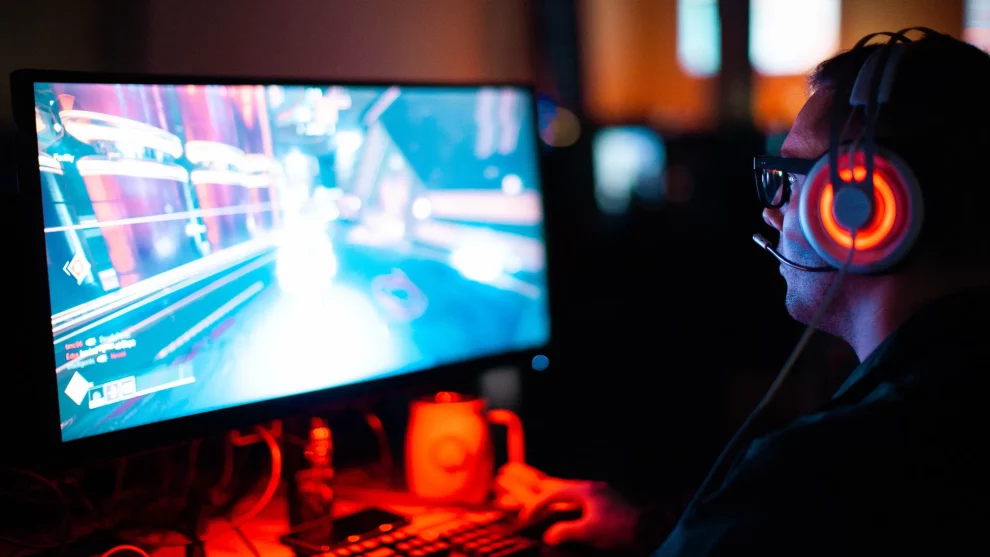Optimizing games for high performance can be like tuning a race car – every little tweak counts! Follow this comprehensive guide to enjoy buttery smooth gameplay even if your PC’s hardware seems underpowered on paper.
Step 1: Check Minimum and Recommended System Requirements
Before making any upgrades or tweaks, verify that your PC actually falls short of the game’s system requirements. Compare specifications like CPU model, RAM capacity, and graphics card to the published minimum and recommended specs.
If there is a mismatch, determine where the bottleneck lies. Upgrading the weakest component will give you the biggest performance gain per dollar spent. For example, maxing out your RAM capacity can help more than getting a slightly faster CPU.
Step 2: Update Graphics Drivers for Latest Performance and Bug Fixes
Outdated graphics drivers can hamper performance drastically. Use tools like Nvidia GeForce Experience or AMD Radeon Software to keep drivers up to date automatically. They generally improve game compatibility and fix bugs that can cause crashes or stutters.
Step 3: Consider Overclocking Components (Advanced)
Overclocking involves pushing your CPU, RAM or GPU beyond stock speeds to eke out extra frames per second. However, proceed with extreme caution as overclocking incorrectly can lead to system instability or complete failure.
If done properly with reputable tools like MSI Afterburner, overclocking can give you a performance edge to make games more playable on aging hardware. But make sure you research thoroughly before attempting this advanced tweak.
Step 4: Adjust In-Game Graphics Settings for Massive Performance Gains
Lowering graphics settings like display resolution, texture detail, anti-aliasing and shadows can vastly improve frame rates and responsiveness. You’ll be surprised how little visual quality you lose, while frame rates can literally double in some cases.
Each game is different, so spend time experimenting with the settings to find the sweet spot between visual fidelity and silky smooth performance for your system.
Step 5: Disable Background Apps and Services
Games compete for limited CPU and RAM resources. Eliminating unnecessary background processes maximizes the slice of the pie available to games.
Close web browser tabs, media players and other programs before launching a game. Windows 10/11 offers a built-in Game Mode to handle this optimization automatically.
Step 6: Tweak Windows Settings for Faster Performance
Visual effects like window animations and transparency seem minor, but they require additional graphics processing. Disabling them via “Adjust the performance and appearance of Windows” frees up resources for better game performance.
Other tweaks like customizing the virtual memory (pagefile) size can yield small optimization dividends as well.
Step 7: Consider Gaming Software to Automate Optimizations
While their actual impact is debatable, game boosters like Razer Cortex can eke out a tiny bit more game performance, especially on systems falling short of minimum requirements.
By automatically configuring Windows settings and terminating non-essential background tasks, they require minimal effort for a small potential gain.
Advanced Tweaks for Truly Maxed Out Performance
The optimizations above cover most of what the average user can do get better game performance. But performance junkies can explore additional advanced tweaks, including:
- Defragmenting hard drives to optimize file access speeds
- Using the High Performance power plan for maximum CPU/GPU power
- Monitoring hardware usage with tools like MSI Afterburner to catch bottlenecks
Key Takeaways to Game Faster
Getting the most out of your gaming PC requires time and effort but the payoff of higher frame rates is worth it. Keep these essential tips in mind:
- Focus on upgrades and optimizations with the biggest impact first
- Not all tweaks help all configurations – experiment to see what works for your rig
- Strike the right balance between performance and visuals based on your preferences
Following this guide lays the groundwork. Tailor it to your specific hardware and games, run benchmarks to quantify gains, and ultimately have fun reveling in buttery smooth gameplay!
















Add Comment